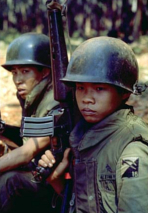
The Battle of Xuân Lộc was the last major battle of the Vietnam War that took place at Xuân Lộc, Đồng Nai Province. Over a period of twelve days between 9 and 21 April 1975, the outnumbered South Vietnamese reserves attempted to stop the North Vietnamese forces from overunning the town and breaking through towards South Vietnam's capital, Saigon. The Army of the Republic of Vietnam (ARVN) committed almost all their remaining mobile forces, especially the 18th Division, under Brigadier General Lê Minh Đảo, to the defence of the strategic crossroads town of Xuân Lộc, hoping to stall the People's Army of Vietnam (PAVN) advance. The battle ended when the town of Xuân Lộc was captured by the PAVN 4th Army Corps led by Major General Hoàng Cầm.

The Battle of Phước Long was a decisive battle of the Vietnam War which began on December 12, 1974, and concluded on January 6, 1975. The battle involved the deployment of the People's Army of Vietnam (PAVN) 4th Army Corps for the first time, against determined units of the Army of the Republic of Vietnam (ARVN) in Phước Long in Bình Phước Province near the Cambodian border, under the command of Lieutenant General Dư Quốc Đống.

The Battle of Lộc Ninh was a major battle fought during the Easter Offensive during the Vietnam War, which took place in Bình Long Province, South Vietnam between 4 and 7 April 1972. Towards the end of 1971, North Vietnamese leaders decided to launch a major offensive against South Vietnam, with the objective of destroying Army of the Republic of Vietnam (ARVN) units and capturing as much territory as possible, in order to strengthen their bargaining position in the Paris Peace Accords. On 30 March 1972, two People's Army of Vietnam (PAVN) divisions smashed through the Vietnamese Demilitarized Zone, marking the commencement of the Easter Offensive. They quickly overwhelmed South Vietnamese units in the I Corps Tactical Zone. With the rapid collapse of South Vietnamese forces in the northern provinces of South Vietnam, PAVN and Viet Cong (VC) forces began preparing for their next offensive, targeting Bình Long Province in the rubber plantation region north of Saigon. On 4 April, the VC 5th Division opened their attack on Lộc Ninh, defended by the ARVN 9th Infantry Regiment. After three days of fighting, the vastly outnumbered ARVN forces, though well supported by American air power, were forced to abandon their positions in Lộc Ninh.

The 18th Division was an infantry division in the III Corps of the Army of the Republic of Vietnam (ARVN). The U.S. Military Assistance Command Vietnam considered the 18th as undisciplined and it was well known throughout the ARVN for its "cowboy" reputation. In 1975 the 18th was made famous for its tenacious defense of Xuân Lộc, the last major battle before the Fall of Saigon.
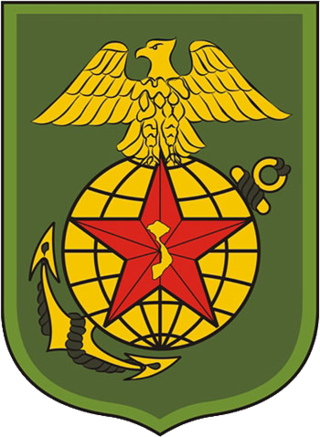
The Republic of Vietnam Marine Division was part of the armed forces of South Vietnam. It was established by Ngo Dinh Diem in 1954 when he was Prime Minister of the State of Vietnam, which became the Republic of Vietnam in 1955. The longest-serving commander was Lieutenant General Le Nguyen Khang. In 1969, the VNMC had a strength of 9,300, 15,000 by 1973, and 20,000 by 1975.

The Vietnamese Rangers (Vietnamese: Biệt Động Quân; Chữ Hán: 別動軍), commonly known as the ARVN Rangers or Vietnamese Ranger Corp (VNRC), were the light infantry of the Army of the Republic of Vietnam. Trained and assisted by American Special Forces and Ranger advisers, the Vietnamese Rangers infiltrated beyond enemy lines in search and destroy missions. Initially trained as a counter-insurgency light infantry force by removing the fourth company each of the existing infantry battalions, they later expanded into a swing force capable of conventional as well as counter-insurgency operations, and were relied on to retake captured regions. Later during Vietnamization the Civilian Irregular Defense Group program was transferred from MACV and integrated as Border Battalions responsible for manning remote outposts in the Central Highlands.

War Zone D was the area in South Vietnam around the Dong Nai River, north of Bien Hoa which served as a Viet Cong (VC) and People's Army of Vietnam (PAVN) base area and infiltration route during the Vietnam War.

Phase Two of the Tet Offensive of 1968 was launched by the People's Army of Vietnam (PAVN) and Viet Cong (VC) against targets throughout South Vietnam, including Saigon from 29 April to 30 May 1968. The May Offensive was considered much bloodier than the initial phase of the Tet Offensive. U.S. casualties across South Vietnam were 2,169 killed for the entire month of May, making it the deadliest month of the entire Vietnam War for U.S. forces, while South Vietnamese losses were 2,054 killed. PAVN/VC losses exceeded 24,000 killed and over 2,000 captured. The May Offensive was a costly defeat for the PAVN/VC.
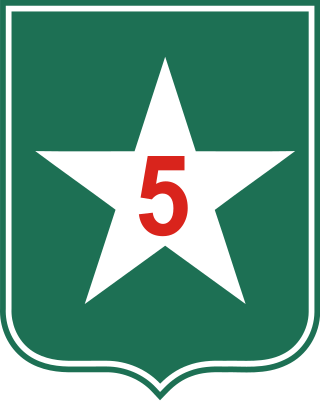
The Fifth Division of the Army of the Republic of Vietnam (ARVN)—the army of the nation state of South Vietnam that existed from 1955 to 1975—was part of the III Corps that oversaw the region of the country surrounding the capital, Saigon.
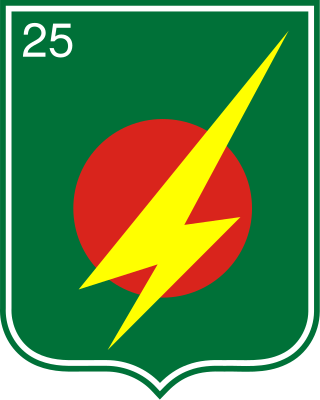
The 25th Division of the Army of the Republic of Vietnam (ARVN)—the army of the nation state of South Vietnam that existed from 1955 to 1975—was part of the III Corps that oversaw the region of the country surrounding the capital, Saigon. It was based at Củ Chi Base Camp to the northwest of the city.

The 22nd Division of the Army of the Republic of Vietnam (ARVN) was part of the II Corps that oversaw the region of the Central Highlands north of the capital Saigon. The 22nd Division was based in Ba Gi near the south central coast.
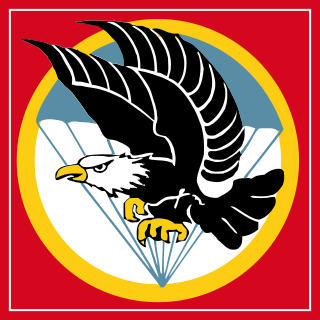
The Vietnamese Airborne Division or VNAD was one of the earliest components of the Republic of Vietnam Military Forces. The Vietnamese Airborne Division began as companies organized in 1948, prior to any agreement over armed forces in Vietnam. After the partition of Vietnam, it became a part of the Army of the Republic of Vietnam. This division had its distinct origins in French-trained paratrooper battalions, with predecessor battalions participating in major battles including Dien Bien Phu and retained distinct uniforms and regalia. With the formation of an independent republic, the colonial paratroopers were dissolved, however regalia and aesthetics alongside the nickname "Bawouans" would be retained.

At the beginning of 1967 the United States was engaged in a steadily expanding air and ground war in Southeast Asia. Since its inception in February 1965, Operation Rolling Thunder, the bombing campaign against North Vietnam, had escalated in the number and significance of its targets, inflicting major damage on transportation networks industry, and petroleum refining and storage facilities. Yet the campaign showed no signs of achieving either of its stated objectives. The air attacks had not broken the Hanoi government's will to continue the war, and they had not halted or appreciably hindered the flow of People's Army of Vietnam (PAVN) troops and supplies into South Vietnam. North Vietnam had been able to repair damage and develop substitutes for destroyed facilities rapidly enough to counter the incremental escalation of the U.S. air campaign. With Soviet and Chinese assistance, the North Vietnamese had built a large and sophisticated air defense system. Its guns and missiles extracted a toll in pilots and aircraft for every American raid. On the ground in South Vietnam, the U.S. force buildup, begun in late 1965, was approaching completion. More than 380,000 American troops were in the country, alongside over 730,000 Army of the Republic of Vietnam (ARVN) soldiers and some 52,000 soldiers from other allied nations. After a year of base building and intensifying combat, the U.S. commander, General William Westmoreland, believed that his forces were ready for major offensives that would seize the battlefield initiative from the PAVN and Viet Cong (VC). The PAVN/VC, however, had been conducting their own buildup, including the infiltration into South Vietnam of regular PAVN divisions. These units, along with VC guerrillas and light infantry formations, were countering the American challenge. Within South Vietnam, the PAVN/VC sought opportunities to inflict American casualties in large and small engagements. They also concentrated troops at various points on South Vietnam's borders to create a strategic threat to the allies and compel the Military Assistance Command, Vietnam, (MACV) to disperse its reserves.
Operation Coronado II was the second of eleven in the Operation Coronado series conducted by the U.S. Mobile Riverine Force (MRF) in conjunction with various units of the Army of the Republic of Vietnam (ARVN) in late July 1967 in an attempt to shut down Viet Cong (VC) strongholds in the Mekong Delta. Three battalions of American troops, along with two ARVN battalions, backed by helicopters and watercraft swept the area and waterways surrounding Mỹ Tho in search of VC forces. Two VC battalions were encountered and many captured, although both sides suffered numerous casualties. The Allied forces also cordoned off the area to search water traffic for VC supplies or suspects. The Americans credited the South Vietnamese 3rd Marine Battalion for the success of the operation.

The Hue–Da Nang Campaign was a series of military actions conducted by the People's Army of Vietnam (PAVN) against the Army of the Republic of Vietnam (ARVN) during the Vietnam War, also known in Vietnam as the American War. The campaign was centred on the cities of Huế and Da Nang, with secondary fronts in the provinces of Quảng Trị and Quảng Ngãi. The campaign began on March 5 and concluded on April 2, 1975.
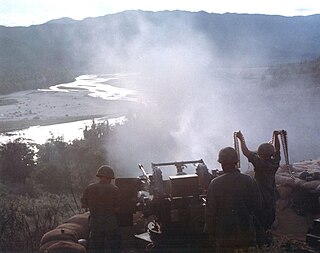
Operation Pershing was an operation conducted by the 1st Cavalry Division, the 3rd Brigade, 25th Infantry Division, the Army of the Republic of Vietnam (ARVN) 22nd Division and the South Korean Capital Division in Bình Định Province, lasting from 12 February 1967 to 19 January 1968.

Operation Yellowstone was an operation conducted by the 1st and 3rd Brigades, 25th Infantry Division in northeast Tây Ninh Province, lasting from 8 December 1967 to 24 February 1968.
Operation Quyet Thang, was a United States Army and Army of the Republic of Vietnam (ARVN) security operation to reestablish South Vietnamese control over the areas immediately around Saigon in the aftermath of the Tet Offensive. The operation started on 11 March 1968 and ended on 7 April 1968.
The War of the flags was a phase of fighting throughout South Vietnam lasting from 23 January to 3 February 1973 as the forces of North and South Vietnam each sought to maximize the territory under their control before the ceasefire in place agreed by the Paris Peace Accords came into effect on 27 January 1973. The fighting continued past the ceasefire date and into early February. South Vietnamese forces made greater territorial gains and inflicted significant losses on the North Vietnamese forces.
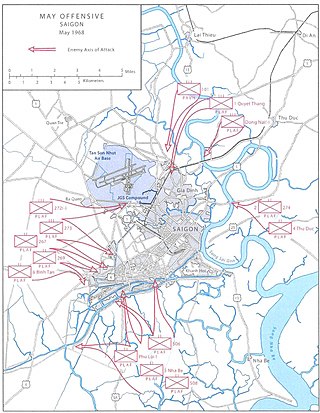
The Battle of West Saigon took place from 5–12 May 1968 during the May Offensive of the Vietnam War as South Vietnamese and United States forces countered the main thrust of the offensive against the western suburbs of Saigon.
















